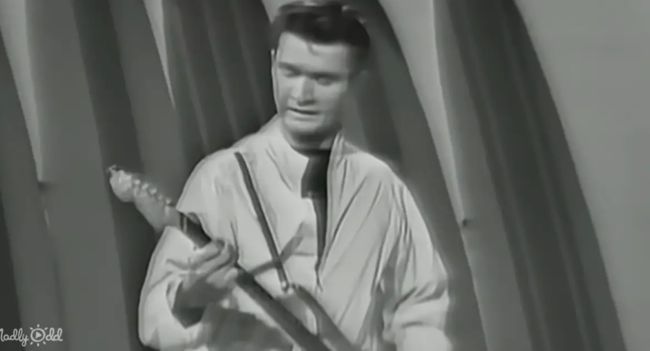On a landmark evening, October 6, 1963, Dick Dale, the king of surf guitar, rode a wave of euphoria onto The Ed Sullivan Show. His electrifying performance of “Surfin’ And A-Swingin’” wasn’t just a performance; it was a cultural wave.

1963 was a year that echoed with the sounds of surf music, and at its crest was Dick Dale. His journey in music was characterized by a unique fusion of sounds. His signature style, a blend of staccato picking, heavy reverb, and Middle Eastern melodies, was innovative and transformative.
And years later, when Quentin Tarantino used Dale’s music in “Pulp Fiction”, a new group of young fans again discovered this amazing musician’s work. During the Ed Sullivan Show performance, Dale’s fingers flew across the fretboard of his Fender Stratocaster, a blur of motion creating that signature reverberated sound.

The precision and speed of his play were not just technical but emotional, capturing the essence of the surf experience. Moreover, the song itself was a symphony of the surf culture. Its melody was like a wave – rising, falling, and crashing with intensity. The rhythms resonated with the freedom and adventure of surfing, a perfect blend of excitement and nostalgia.
In addition, the video clip of this performance captures not just a musical moment but a cultural phenomenon. Though devoid of the era’s vibrant colors, the black-and-white footage is rich in emotion and energy.

Transitioning through the song, Dale’s mastery of his instrument was evident. Each strum was a call to the waves, each note a reflection of the ocean’s roar. The audience, spellbound, was instantly transported to the sunny beaches of California.
Dale’s performance is more than just a musical masterpiece; it’s a historical artifact. Watching this video evokes a sense of nostalgia, a longing for the simplicity and innocence of those days. And so, we urge you to share this video clip with friends and family. Because it’s not just sharing a piece of music; it’s a moment when music bridged generations.

